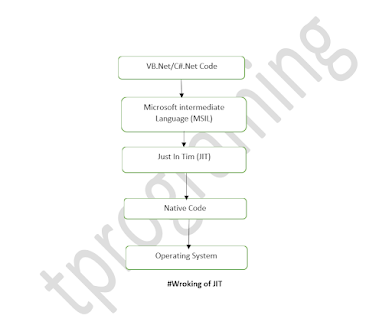Dot net is an framework developed by Microsoft corporation .
It is an reusable framework .
First version of dot net framework 1.0 was released in Feb 13 , 2000.
It includes 20 to 40 languages .
What is framework ?
Framework is a collection of reusable classes which represent software code and design that can be recycled for various application domains .
.Net is a software platform, not an operating system. This platform is used to compile and execute programs written by using Net compatible languages.
A framework can be a collection of libraries and technologies consist of many reusable classes and line of code.
Advantages of Dot net Framework :
- Language interoperability
- Cross-platform support
- Consistent programming model
- easy to use
- pre-defined libraries given
- Easy conversion
Objectives of dot net framework :
- Dot Net provides Security
- Dot Net enhanced web-based development
- Dot Net introduced a unified programming Environment
- Dot Net simplified windows programming
- Dot Net committed developers to object oriented technologies
Architecture/components of Dot Net Framework :
- .Net platform is made up of of different components like Net compatible languages, Common Languages Specification (CLS), Common Type System (CTS), Net Framework Class Library (FCL), Common Language Runtime (CLR) and Operating system.
A] Application Layer :
This is the first layer of architecture which includes every type of application.
It include of windows form application , web form application and console application .
B] Class Library :
Class library is provides all type of pre-defined functions .
It provides basic class library as well as framework class library .
Class library provides features like ADO dot net , remoting , reflection , diagnostic , threading and input/output .
Without this class library dot net framework is incomplete and useless .
C] CLR(Common Language Runtime) :
Common language runtime provides language compatability .
CLR provides executive environment to framework .
It provides JIT compiler which is used to convert MSIL(Microsoft Intermediate Language) into Native code .
It provides features like Exception handling , memory management , code manager , garbage collector and Code conversion
Another components :
A] CLS :
CLS stands for Common Language Specifications .Microsoft has designed some set of rules for each language which must be followed by every language before conversion .This is called as common language specifications .CLS defines a minimum set of features that a language must implement before it is considered to be .Net compliant.
Whenever the object of the class is to be declared rule simply states that new keywords must be used.
B] CTS :
CTS stands for Common Type Ssytem .
It specifies how types are declared, used and managed in the runtime .
It is runtimes support for cross-language integration .it is also called as super set of CLS.
CTS is divided into two types as explained below .
(a) Value Types
(b) Reference Types
(a) Value Types:
Value type contains their data and instances of value type are allocated on the stack, they cannot be null and must always contain some data.
There are three general value types:
- Build in types
- User defined type
- Enumeration Type
Build in Types:
Primitive data types defined in .Net such as Byte, Int16, Int32 and Int64, Single, Double, Decimal, Char, Boolean, Date time etc.
Value type can be defined in VB.NET as
Dim a As Integer
Dim b As Boolean=false
Value type can be defined in C#.Net
What is JIT compiler ?
JIT stands for Just In Time compiler .
CLR provides this compiler for the conversion purpose .
JIT is used to convert MSIL code into native code .


